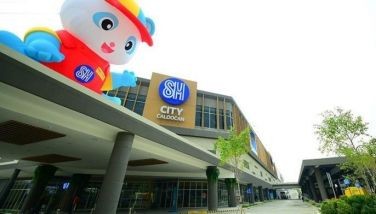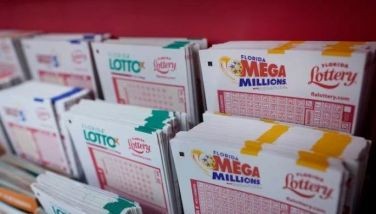Who says there is unemployment?
(Part I)
Just think — the piece of bread you took for breakfast was made possible by employing ten workers: the farmer, a driver, the miller, sack assembler, another driver, the baker assisted by the dough kneader and oven tender, the wrapper, another driver who takes the baked bread to the grocery, small sari-sari store, school cafeteria or sandwich store.
Without professional skills training, the above technicians cannot produce a saleable quality product. Professional training is required to employ skilled trainors. It is essential to complement these with functional tools which are properly maintained.
A long time ago man was self-sufficient
A long time ago, man was self-sufficient in all his needs. Father and mother educated their children. The father farmed together with his son. The mother did her house chores and looked after the baby, with her daughter helping her. Food and herbal medicine were produced from the fields. They built their houses from forest trees, while clothes were woven at home with looms.
Not long after, the families became bigger. Countryside schools for mixed-age groups of children were organized with only one teacher attending to all. Small community convenience stores sprang up. The village doctor had more patients.
Population growth increased the demand and supply for food, transport, schools, etc.
As population grew, the demand for food, transport, schools, and health care also increased. Many men left their farms to work in factories in towns bringing with them their families. More spacious schools were put up. Bigger variety stores accommodated the needs of more people. New and wider roads were needed as business grew. Town hospitals with more doctors and nurses were required.
Since more goods were needed, new machines were invented. The factories could produce goods faster and better. They did the work of many men. Men had to look for other jobs. Some worked in stores, others in offices. Some became truck drivers, or policemen. Since varied services were needed, more people were hired.
The importance of Filipino farmers and fishermen and their interdependency
Filipinos need not go hungry or be deprived of shelter and clothing. Our land and seas are rich in natural resources to sustain our lives. Sad to say, we were not taught the responsibility of mankind to conserve the biosphere (the animal and plant life on land, water and air). Thus these resources have been depleted. It is urgent to make the topic “Man and the Biosphere†part of the grade school curriculum to emphasize human being’s responsibility to sustain life. Since teenagers seek economic independence, the additional practical agri-business can ideally be inculcated in the additional senior high school years of the new K to 12 curriculum.
The primary grade school teacher may discuss how many farm products are produced by farmers other than wheat or rice flour. It emphasizes “how many people depend on the farmer for their work.†The teacher can increase the enthusiasm of children by encouraging them to enumerate agricultural products and discuss the corresponding workers like butchers, bakers, garment designers, and others who produce the final products.
Then you can say, “Look at how many people provide our needs. But each one has their own needs as well. Allow the children to list or discuss the skills of the tailor, the shoemaker, the carpenter, the tool repairman, the butcher, the teacher, the doctor, etc. Be sure to include the policemen, the firemen and even the banker. Let them exchange views on how each community helper need each other to feel healthy, safe and comfortable.
This will ultimately lead to the topic of business transaction, income, wages, and savings that will introduce the banking system. Then either parent or teacher will lead them to the conclusion that — no one can live alone. People are interdependent with one another.
The missing element - ‘sense of entrepreneurship’
As early as the ’70s, Washington Sycip, president of the prestigious accounting firm of Sycip, Gorres and Velayo with subsidiaries in Taipei, Jakarta and Singapore, observed that the competence of the average college graduate in the Philippines is equivalent to that of a high school graduate in Taiwan? Moreover, the spirit of entrepreneurship is not ingrained in the Filipino psyche, otherwise our economy could surge forward.
Even in their teen years, Chinese children are usually exposed to the family business. Their Math skills are acquired from the frequent exposures to business transactions in the family enterprise whether it is the corner sari-sari store, a junkyard, an eatery or wholesale trading in rice or tobacco.
Filipinos can learn this sense of entrepreneurship from the Chinese culture, just as the Thais, the Malaysians and successful Indonesians have done from the Chinese immigrants, who count today among the rich families of their land. Their businesses started with small investments called “puhunang lugaw.†They existed as peddlers balancing two cans of tofu custards or taho from their shoulder poles or hiring young boys to cart recyclable bottles, cans and old newspapers (bote garapa). They were smart to create the business on the basic needs of people: food, clothing and shelter. They were content to make small profit, which created brisk business. As their savings grew, their businesses expanded.
Note how Chinese businessmen differ from their Filipino counterparts. When Filipinos accumulate savings, they usually renovate their houses and purchase new cars. Meantime, the Chinese businessmen use their savings to start a bigger business then expand it further. The sari-sari store becomes a grocery, the hardware into a huge enterprise because they acquire logging contracts, the haberdashery cloth store in Carriedo expands into a textile mill. An inventory of the “rags to riches†stories of poor Chinese immigrants, who struggled through social prejudices to survive and eventually helped strengthen the economy of their adopted country, is fascinating.
The basic formula of Chinese entrepreneurship
Note the humble beginnings of business tycoons:
John Gokongwei Jr. was only 13 years old when he lost his father, his home, and the family business, leaving him to take care of his mother and five siblings. He peddled soap, thread and candles using his bike to support his family. Later, he rode the Batel, traveling two to three weeks, to sell products from Cebu to Lucena and Manila. As a 30-year-old entrepreneur, he lacked capital, but had good shinyong or trustworthiness as collateral that he was given a clean loan by China Bank. Since then, he has moved from one venture to another, reinvesting his earnings and working for half a century to build a conglomerate.
Henry Sy was 12 years old and had no money when he came to Manila from China before World War II. Now, he is one of the wealthiest men on the planet. He believes “the importance of discipline, had work and good credit.†After the war, he joined the booming buy-and-sell business and saved enough money for future ventures. His SM Group of Companies, started as a shoe-retailing store on Carriedo Street in Quiapo, Manila. From there, he built the Philippines’ largest chain of department stores.
Lucio Tan wanted to be a scientist, but instead became a captain of industry. As a senior high school student, he was too embarrassed to ask for yearly tuition from his granduncle, and so he worked part time at the Bataan Cigar and Cigarette Factory, which was owned by the sister of his grandfather. He was paid a benevolent salary of P120, but half of it went to his father. A Chemical Engineering student, he had to leave school to focus on his growing business. He learned tobacco trading of Ilocos Sur, which eventually helped him start his own tobacco company. He believes, “Entrepreneurs should never stop learning. All human beings should continue learning.â€
The real ‘Go Negosyo’ had humble beginnings
Humble beginnings mark the first phase of the lives of most Filipino taipans like Lucio, John, and Henry. Unless they get swell-headed and selfish, “payback time,†to the underprivileged countrymen is not in their agenda. But if it were, we can, so to speak, confer sainthood on them. Take the case of Lucio Tan’s Fortune Tobacco Company. At its height, it had 5,000 employees. If it were not for Mr. Tan, how could 5,000 families sustain their lives?
- Latest

























 Partner
Partner